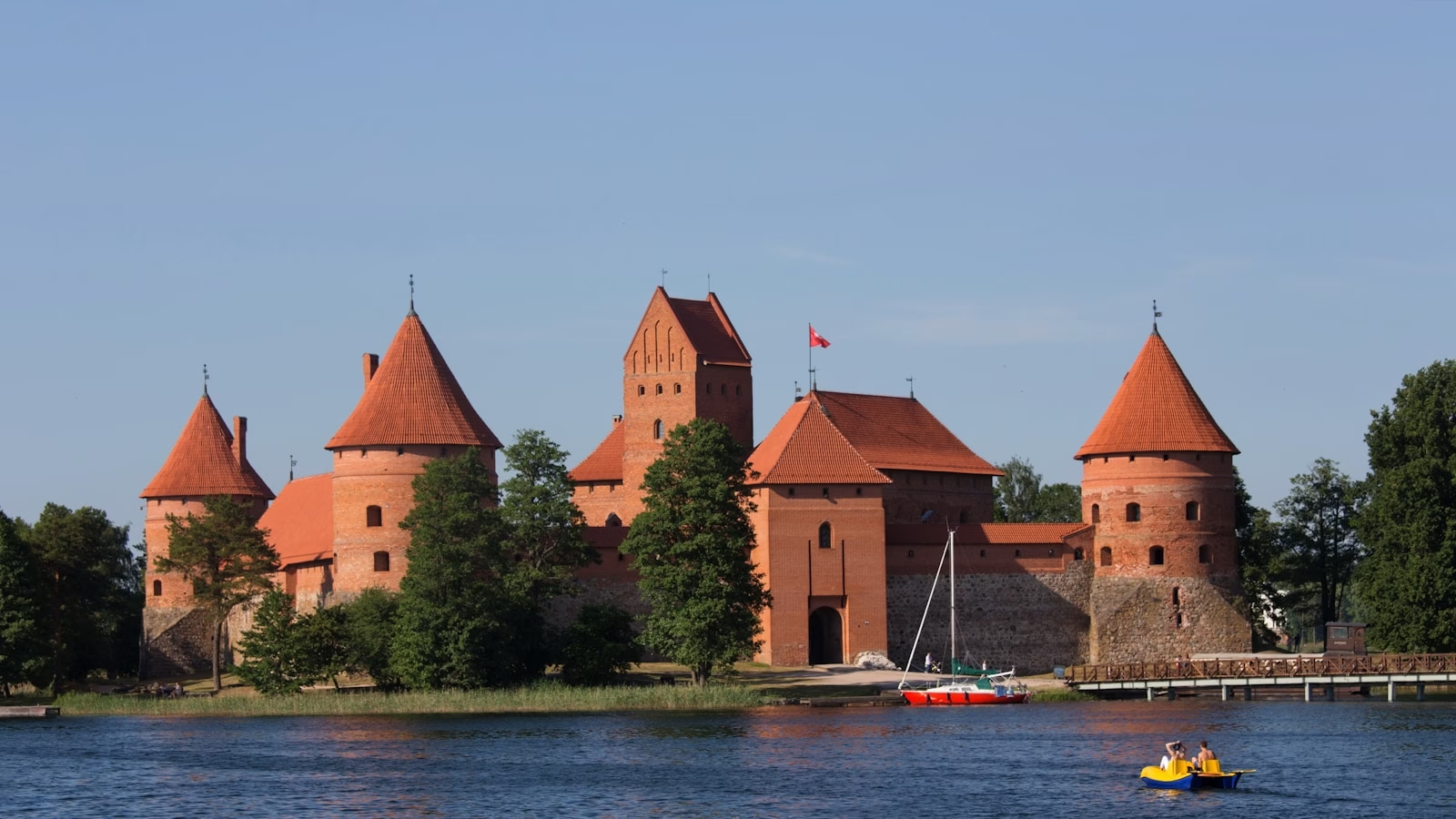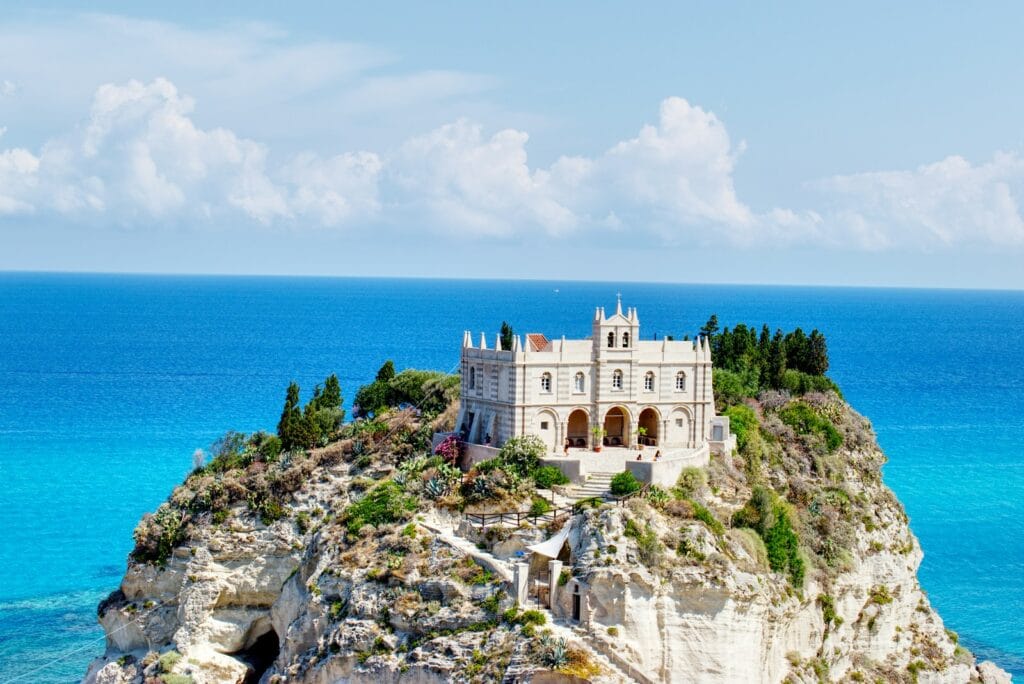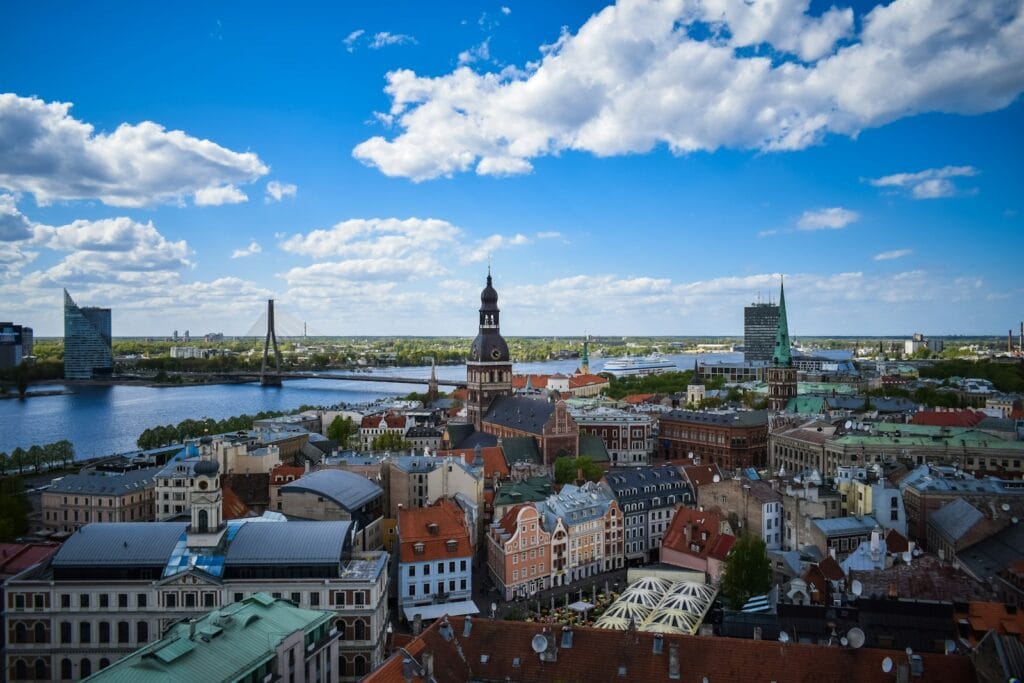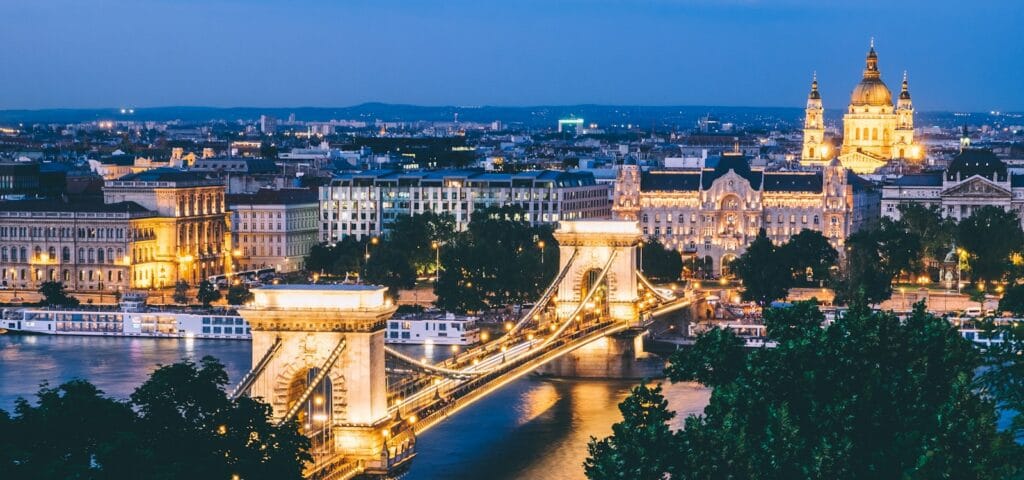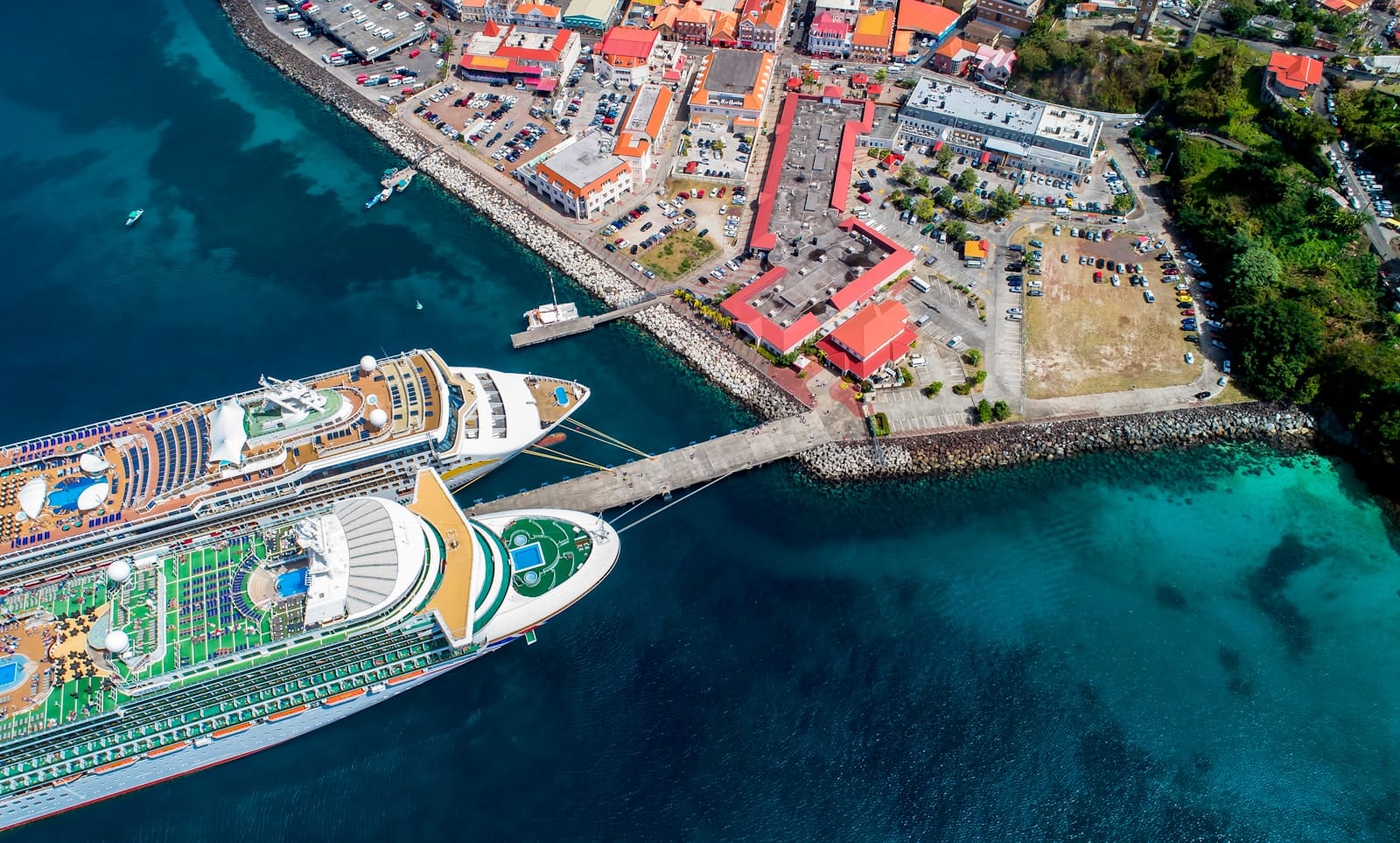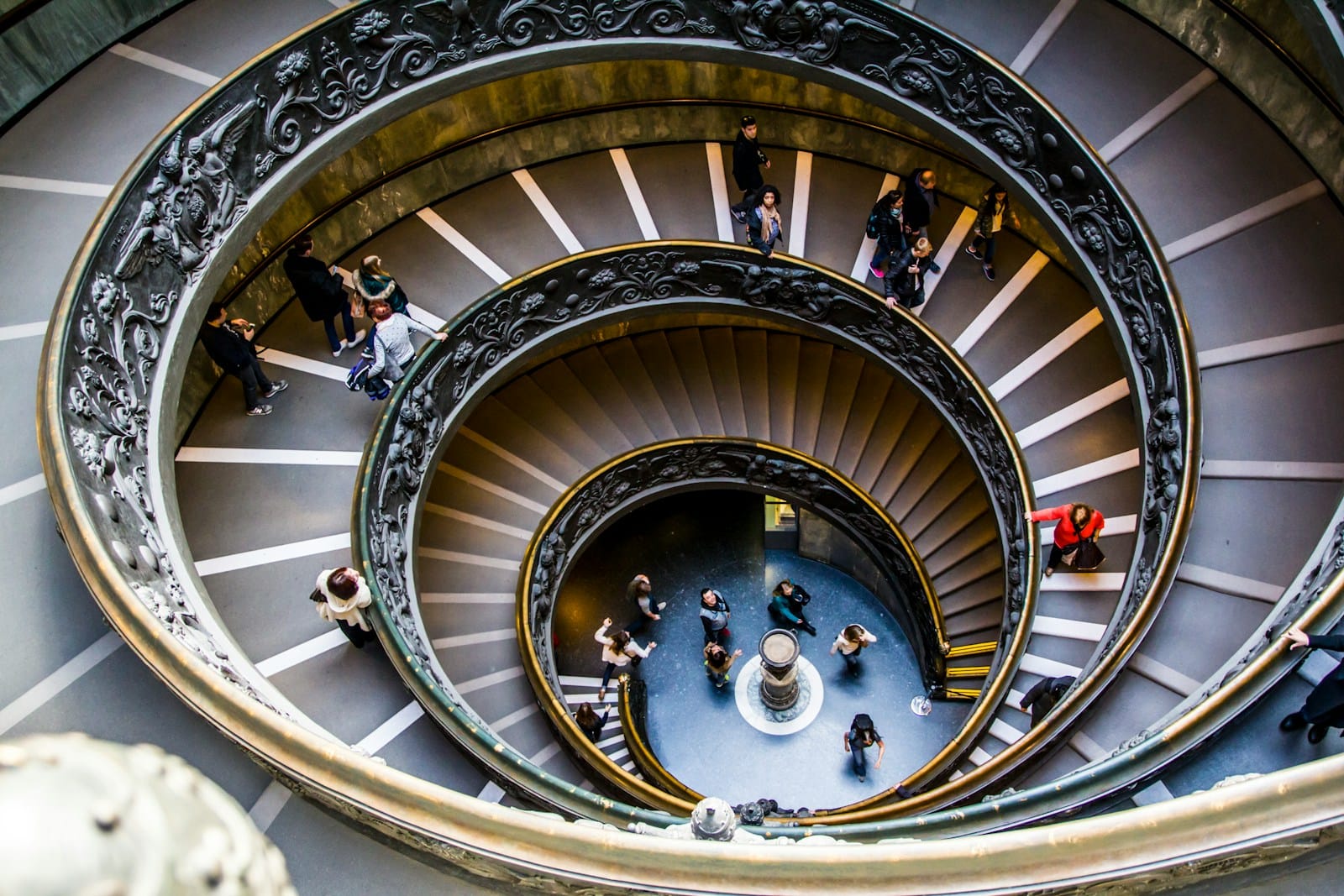Lithuania Travel Guide – Baltic Beauty Unveiled
Intro to Lithuania Travel Guide
Lithuania, the largest and southernmost of the Baltic states, is a captivating blend of rich history, vibrant culture, and striking natural landscapes. This compact country boasts medieval cities, endless forests, sparkling lakes, and an alluring coastline along the Baltic Sea. Vilnius, the capital, charms visitors with its UNESCO-listed Old Town filled with baroque and gothic architecture, while the Curonian Spit offers a surreal world of drifting sand dunes and pine forests. Beyond the well-known sights lie quiet villages, sprawling national parks, and a deeply rooted cultural heritage shaped by centuries of resilience and creativity.
Whether you are drawn to Lithuania’s thriving arts scene, outdoor adventures in pristine nature, or culinary delights steeped in tradition, this Baltic gem offers a uniquely authentic travel experience.
Start planning your trip with our complete Lithuania Travel Guide — and uncover the diverse wonders this enchanting country holds.
Where to Go in Lithuania
Alytus | Kaunas | Klaipėda | Marijampolė | Panevėžys | Šiauliai | Tauragė | Telšiai | Utena | Vilnius
💡Quick Facts:
Country: Lithuania
Continent: Europe
Area: 65,300 km² (25,200 mi²)
Population: ~2.8 million (2024 est.)
Density: ~43 people/km²
Capital: Vilnius
Regions/Subregions:
Vilnius County (Vilnius, Trakai)
Kaunas County (Kaunas, Jonava)
Klaipėda County (Klaipėda, Neringa, Palanga)
Šiauliai County (Šiauliai, Joniškis)
Panevėžys County (Panevėžys, Biržai)
Alytus County (Alytus, Druskininkai)
Utena County (Utena, Anykščiai)
Tauragė County (Tauragė, Jurbarkas)
Official & Regional Languages: Lithuanian (official); Russian and Polish spoken in some areas
Currency: Euro (EUR)
Time Zone(s): Eastern European Time (UTC+2); Eastern European Summer Time (UTC+3) in summer
Airports: Vilnius International Airport (VNO), Kaunas Airport (KUN), Palanga International Airport (PLQ)
Climate: Temperate continental; warm summers, cold winters
Known For: Baroque architecture in Vilnius, Curonian Spit UNESCO site, Hill of Crosses, Baltic Sea beaches, basketball culture
🛂Arrival Info:
Member of the Schengen Area; visa-free entry for EU/EEA citizens and many non-EU countries including the US, Canada, Australia (up to 90 days within 180 days).
Schengen Visa required for visa nationals; apply at Lithuanian embassies or consulates.
Official visa info at Lithuanian Ministry of Foreign Affairs.
EU customs rules apply; non-EU arrivals allowed duty-free imports of 1L spirits or 2L wine and 200 cigarettes.
💉Health Info:
No mandatory vaccines; routine vaccines recommended.
Tick-borne encephalitis present in rural/forest areas; vaccine recommended for extended outdoor stays.
High-quality healthcare in major cities; main hospitals in Vilnius, Kaunas, and Klaipėda.
EU residents with EHIC receive public care; non-EU visitors should have travel insurance.
Pharmacies common in towns; English spoken by many pharmacists.
✅ Check travel insurance options for travel emergencies, delays, and medical needs abroad — Get coverage here
✅ Stay Informed with Official Updates: WHO – International Travel & Health | CDC – Travel health updates
🚨Travel Advisory:
Generally safe; low crime rates.
Petty theft and pickpocketing can occur in crowded tourist areas, especially in Vilnius Old Town.
Roads are well maintained; winter driving requires caution due to snow and ice.
Check advisories at UK FCDO
✅ Stay Informed with Official Updates: US Travel Advisory | UK Foreign Travel Advice
📅Holidays:
February 16 – Independence Day
March 11 – Restoration of Independence Day
June 24 – St. John’s Day (Joninės)
July 6 – Statehood Day
December 24–26 – Christmas Holidays
💰Visitor Info:
Currency: Euro; ATMs available in all cities and many towns.
Credit/debit cards widely accepted; cash useful in rural areas.
Tipping 5–10% in restaurants if service charge not included.
Budget: €40–60/day; Midrange: €80–120/day; Luxury: €150+/day.
✈️Airports:
Vilnius International Airport (VNO) – main gateway
Kaunas Airport (KUN) – budget airlines and domestic connections.
Palanga International Airport (PLQ) – coastal access to Baltic resorts.
✅ Delayed or canceled flight? Check if you’re eligible for compensation
🚍Transport:
Intercity buses and trains link major cities; reliable and affordable.
Public transport in Vilnius and Kaunas includes buses and trolleybuses; tickets via app or kiosks.
Car rental widely available; driving on the right.
Domestic flights rare due to short distances.
Cycling popular in summer, with bike lanes in cities and tourist areas.
✅ Book reliable airport transfers and in-city rides in advance. Reserve your ride here
📶Connectivity:
SIM cards from Telia, Bite, and Tele2 available at airports and shops.
Strong 4G coverage nationwide; 5G in Vilnius, Kaunas, and Klaipėda.
Free public Wi-Fi widely available, including in city centers and parks.
✅ Stay connected abroad with affordable eSIM data packs. Get your eSIM here
📜Laws & Etiquette:
Legal drinking age: 20 for alcohol above 6% ABV, 18 for lower-alcohol drinks.
Alcohol sales restricted during late-night hours.
Smoking banned in enclosed public places.
Respect religious sites; modest dress in churches.
Lithuanians value punctuality and personal space.
🛡️Emergency Info:
Emergency number: 112 (police, ambulance, fire).
English widely spoken by emergency operators in cities.
Tourist information centers in major cities and resort areas.
✅ Use embassy locator tools: Embassies Worldwide
🌦️Weather:
Summer (June–Aug): Warm, 18–25°C; peak tourism season.
Winter (Dec–Feb): Cold, often below -5°C with snow.
Spring and autumn mild with fewer crowds.
Best time to visit: May–September for outdoor activities; winter for snow sports.
✅ Stay prepared—check the weather forecast for your destination — Weather Forecast
Lithuania by Region – Where to Go
Lithuania is divided into culturally and geographically distinct regions that each offer unique experiences for travelers. Below is a detailed breakdown of its main regions with key towns, cities, and national parks.
Aukštaitija (Highlands)
- Vilnius: Lithuania’s vibrant capital is a tapestry of architectural styles ranging from Gothic to Renaissance. The city’s sprawling Old Town, with highlights such as Gediminas Tower and the bohemian Užupis district, combines history and creativity. Cafés, galleries, and cobblestone streets invite exploration.
- Utena: Known as the gateway to Aukštaitija National Park, Utena is surrounded by an abundance of lakes and forests. Visitors enjoy kayaking, fishing, and traditional festivals celebrating local folklore.
- Aukštaitija National Park: The oldest national park in Lithuania, characterized by over 120 pristine lakes interconnected by rivers and marshes. It offers hiking, cycling, canoeing, and visits to centuries-old wooden villages with traditional crafts.
Dzūkija (South Lithuania)
- Druskininkai: Famous for its mineral springs and wellness resorts, Druskininkai combines relaxation with outdoor activities like hiking and cycling in nearby pine forests. The Soviet-themed Grūtas Park offers a unique outdoor museum experience.
- Alytus: A regional center on the Nemunas River, known for its green parks, cultural events, and as a starting point for exploring Dzūkija National Park.
- Dzūkija National Park: This park is dominated by dense pine forests and traditional villages where mushroom picking is a beloved autumn pastime. Trails meander through the wilderness, offering a peaceful retreat into nature.
Samogitia (Žemaitija)
- Telšiai: The cultural heart of Samogitia, Telšiai offers panoramic views from its hilltop and a rich legacy of Samogitian folklore, museums, and festivals.
- Plungė: Near Žemaitija National Park, Plungė houses the Cold War-era Plokštinė missile base, now a museum offering a glimpse into Lithuania’s military history.
- Žemaitija National Park: Lakes, hills, and forests form this park’s dramatic landscape. It also preserves ancient pagan sites, including sacred groves and hillforts.
Suvalkija (Sudovia)
- Marijampolė: Known for its vibrant cultural scene and public art installations, Marijampolė is a lively town surrounded by traditional farmland.
- Vilkaviškis: This border town has beautiful churches and offers visitors insights into rural Lithuanian traditions.
- Šakiai: Famous for folk crafts and local markets, Šakiai presents an authentic countryside experience.
Klaipėda & Coast
- Klaipėda: Lithuania’s only seaport city blends Germanic architectural heritage with maritime charm. The Old Town buzzes with cafés, theaters, and festivals like the Sea Festival.
- Palanga: A lively resort town with sandy beaches, a bustling promenade, and the Amber Museum housed in a romantic 19th-century palace.
- Curonian Spit National Park: A UNESCO World Heritage site, this narrow peninsula features majestic sand dunes, tranquil fishing villages like Nida, and rich biodiversity. It is a must-visit for nature lovers and birdwatchers.
Top Places to Visit in Lithuania
Lithuania’s key destinations showcase a rich mixture of history, nature, and culture.
- Vilnius: Explore the extensive Old Town, full of baroque churches, hidden courtyards, and street art in the Užupis district. Climb Gediminas Tower for panoramic city views.
- Kaunas: The country’s second city, famous for its interwar modernist architecture, vibrant riverfront, and the Ninth Fort Museum detailing Lithuania’s WWII history.
- Curonian Spit: Cycle between Nida and Juodkrantė, pass through unique sand dunes, visit traditional villages, and watch migrating birds at Ventė Cape.
- Trakai: Home to the picturesque island castle set on Lake Galvė, known for its Karaim heritage and delicious kibinai pastries.
- Druskininkai: Wellness hub offering mineral baths, forest trails, and a large indoor water park.
- Aukštaitija National Park: Ideal for kayaking across linked lakes, hiking forests, and experiencing authentic rural life.
- Hill of Crosses: Near Šiauliai, this deeply spiritual site hosts thousands of crosses as a testament to Lithuanian faith and resilience.
- Palanga: Enjoy sandy beaches, a lively nightlife scene, and the serene Botanical Park surrounding the Amber Museum.
- Kernavė: Archaeological site with ancient hillforts and stunning river valley views, revealing Lithuania’s pre-Christian past.
- Pajūris Regional Park: A haven for coastal nature walks, birdwatching, and exploring Baltic meadows and dunes.
Book immersive Lithuania tours and experience unforgettable things to do in Lithuania — from medieval city walks and castle visits to tranquil lake kayaking and coastal bike rides along the Curonian Spit.
How to Choose Where to Go in Lithuania
For rich historical and architectural immersion, focus on Vilnius, Kaunas, and Trakai.
Nature lovers will delight in Aukštaitija, Dzūkija, and Žemaitija National Parks, with excellent hiking, canoeing, and foraging.
Beach seekers should visit the Curonian Spit and Palanga for sun, sand, and cycling.
Combine urban culture with nature by pairing Vilnius and Aukštaitija or Kaunas and Klaipėda with the coast.
How to Get Around Lithuania
Lithuania’s compact size makes travel simple and efficient.
- Trains provide comfortable and affordable travel between Vilnius, Kaunas, Klaipėda, and Šiauliai.
- Buses cover a wider network, connecting smaller towns and rural areas with regular services.
- Car rentals offer flexibility for exploring national parks and countryside beyond public transport routes.
- Cycling is increasingly popular, especially along the Curonian Spit and within national parks.
- Ferries operate between Klaipėda and the Curonian Spit, making it easy to access this natural wonder.
- Ride-hailing apps and taxis serve major cities, while rural areas may require pre-booked transport.
Travel Budget and Costs in Lithuania
Travelers can expect:
- Budget daily expenses of approximately €40–€60, including hostel stays, local buses, and street food.
- Mid-range budgets of €80–€120, allowing for 3-star hotel stays, a mix of taxis and trains, and restaurant meals.
- Luxury travelers might spend €150+ daily for boutique hotels, private tours, and fine dining.
Typical costs:
- Meal at a casual café: €5–€10
- Intercity train ticket (Vilnius-Kaunas): €6–€8
- Museum entrance fees: €2–€5
- Mid-range hotel room per night: €50–€70
Tips to save include booking transport and accommodations in advance, using public transit, and dining at markets or local eateries.
Best Time to Visit Lithuania
Lithuania’s climate offers distinct seasons with a variety of travel opportunities year-round.
Spring (March to May)
As temperatures climb from 5°C to 15°C, nature blooms with wildflowers and migratory birds return. Easter markets fill Vilnius and Kaunas with crafts and music. Spring is ideal for hiking in national parks and exploring cities without summer crowds.
Summer (June to August)
Warm weather ranging from 18°C to 25°C and up to 17 hours of daylight make summer perfect for beach days in Palanga, cycling the Curonian Spit, and attending cultural festivals like Joninės, Lithuania’s midsummer celebration featuring bonfires, singing, and dancing.
Autumn (September to November)
Autumn paints forests golden and is the season for mushroom and berry picking in Dzūkija National Park. The weather remains pleasant in September and early October, offering great conditions for photography and quiet coastal walks.
Winter (December to February)
Cold temperatures and snow cover transform Lithuania into a winter wonderland. Vilnius’ Christmas markets light up the city, and outdoor activities like ice fishing in Aukštaitija or skiing near Druskininkai add seasonal charm. Indoor spas and wellness resorts provide cozy retreats.
Must-See Experiences in Lithuania
- Explore Vilnius’ Old Town with its intricate alleys, churches, and Užupis district art scene.
- Cycle or hike the Curonian Spit’s stunning sand dunes and pine forests.
- Relax in the mineral baths and wellness centers of Druskininkai.
- Paddle across the interconnected lakes of Aukštaitija National Park.
- Visit the Hill of Crosses to witness a unique spiritual and historical phenomenon.
- Sample traditional dishes like cepelinai (potato dumplings) and kibinai (pastries) on food tours.
- Discover Kaunas’ interwar architecture and vibrant cultural festivals.
- Watch the sunset from Palanga’s pier with a view of the Baltic Sea.
Best Travel Itineraries in Lithuania
3-Day Itinerary
Day 1: Explore Vilnius Old Town — visit Gediminas Tower, St. Anne’s Church, and the artistic Užupis neighborhood.
Day 2: Take a day trip to Trakai Castle — enjoy the island fortress, try Karaim kibinai, and rent a kayak on Lake Galvė.
Day 3: Head to Kaunas — tour the Ninth Fort Museum, stroll Laisvės Alėja pedestrian street, and explore modernist architecture.
5-Day Itinerary
Day 1–2: Vilnius city highlights including museums, markets, and Cathedral Square.
Day 3: Trakai day trip with hiking around the lakes.
Day 4: Kaunas cultural tour and riverwalk.
Day 5: Visit Aukštaitija National Park — paddle across lakes and explore traditional villages.
7-Day Itinerary
Days 1–3: Vilnius and surroundings — include art galleries, Užupis, and the National Museum.
Day 4: Trakai Castle and Karaim cultural experiences.
Days 5–6: Kaunas and the Ninth Fort, plus street art walking tours.
Day 7: Travel to Klaipėda, explore the port city’s Old Town and take a ferry to the Curonian Spit for sunset cycling.
10-Day Itinerary
Days 1–3: Vilnius with in-depth museum visits, historic churches, and local markets.
Day 4: Trakai Castle with boating and village exploration.
Days 5–6: Kaunas’ cultural landmarks and nearby open-air museums.
Days 7–8: Klaipėda and the Curonian Spit — cycle dunes, visit Nida’s art colony, and watch migrating birds.
Day 9: Palanga for beach relaxation and the Amber Museum.
Day 10: Druskininkai spa day and forest walks.
Local Cuisine and Culinary Experiences
- Cepelinai: Large potato dumplings filled with seasoned meat or mushrooms, served with sour cream and bacon sauce. A national comfort food.
- Šaltibarščiai: A refreshing cold beet soup flavored with dill and served with boiled eggs — popular in summer.
- Kibinai: Pastries filled with lamb or beef, brought by the Karaim minority in Trakai, with a flaky crust and savory filling.
- Kepta Duona: Fried rye bread cubes seasoned with garlic, perfect with beer.
- Žemaičių Blynai: Samogitian potato pancakes stuffed with meat or mushrooms, topped with sour cream.
- Šakotis: A traditional spit cake resembling a pine tree, often served at weddings and holidays.
- Smoked Fish: Coastal towns like Nida offer fresh smoked sprats, herring, and eel.
- Mushroom Dishes: Foraged chanterelles and boletus mushrooms appear in soups, sauces, and main courses during autumn.
- Meduolis: Spiced honey cake, a popular dessert with tea or coffee.
- Gira: Traditional fermented rye bread drink, mildly sweet and refreshing.
Explore local food markets in Vilnius and join culinary tours to experience Lithuania’s rich flavors firsthand.
Travel Safety and Cultural Etiquette in Lithuania
- Lithuania is generally safe; watch for pickpockets in crowded tourist areas.
- Always use pedestrian crossings and wait for green signals; jaywalking fines are enforced.
- Dress respectfully when visiting churches and religious sites.
- Learning basic Lithuanian greetings and phrases is appreciated and can open doors.
- Tipping 5–10% in restaurants is customary but not mandatory.
- Avoid political debates unless invited; conversations around history and sovereignty can be sensitive.
- In rural areas, greet shopkeepers and neighbors politely when entering stores or homes.
- Use caution on icy roads and sidewalks during winter months; appropriate footwear is essential.
- Tap water is safe to drink in cities and towns.
- Photography in museums, churches, and near government buildings may be restricted; always ask first.
- Carry some cash for small purchases, especially outside major cities.
- Be mindful of personal space and quietness, especially in public transport.
Where to Go Next
Latvia offers easy rail and road connections to Riga, known for its Art Nouveau architecture and vibrant nightlife. Poland, accessible by train and bus, provides contrasting historical experiences and culinary delights in cities like Warsaw and Kraków. Estonia, linked by flights and road, presents medieval charm and digital innovation in Tallinn.
Latvia Travel Guide | Poland Travel Guide | Estonia Travel Guide
Final Planning Checklist for Lithuania
- Finalize your itinerary with detailed routes covering cities, national parks, and coastal areas.
- Book accommodations and key guided tours early, especially during summer and festivals.
- Download offline maps and install essential travel apps for transit, language, and currency.
- Verify passport validity, visa requirements, and secure travel insurance.
- Arrange a local SIM card or eSIM for connectivity.
- Pack layered clothing for variable Baltic weather and comfortable footwear for cobblestone streets and nature walks.
- Keep digital and physical copies of important documents.
- Learn a few key Lithuanian phrases to enrich interactions.
- Prepare for seasonal activities — hiking gear for summer, warmer clothes for winter, and swimming essentials for coastal visits.
- Familiarize yourself with cultural norms, tipping etiquette, and safety tips outlined above.
With its mix of medieval streets, tranquil lakes, and dramatic coastline, Lithuania promises a journey full of discovery and heartfelt moments.
Use this guide to explore confidently, uncover hidden gems, and savor every step of your Baltic adventure.

